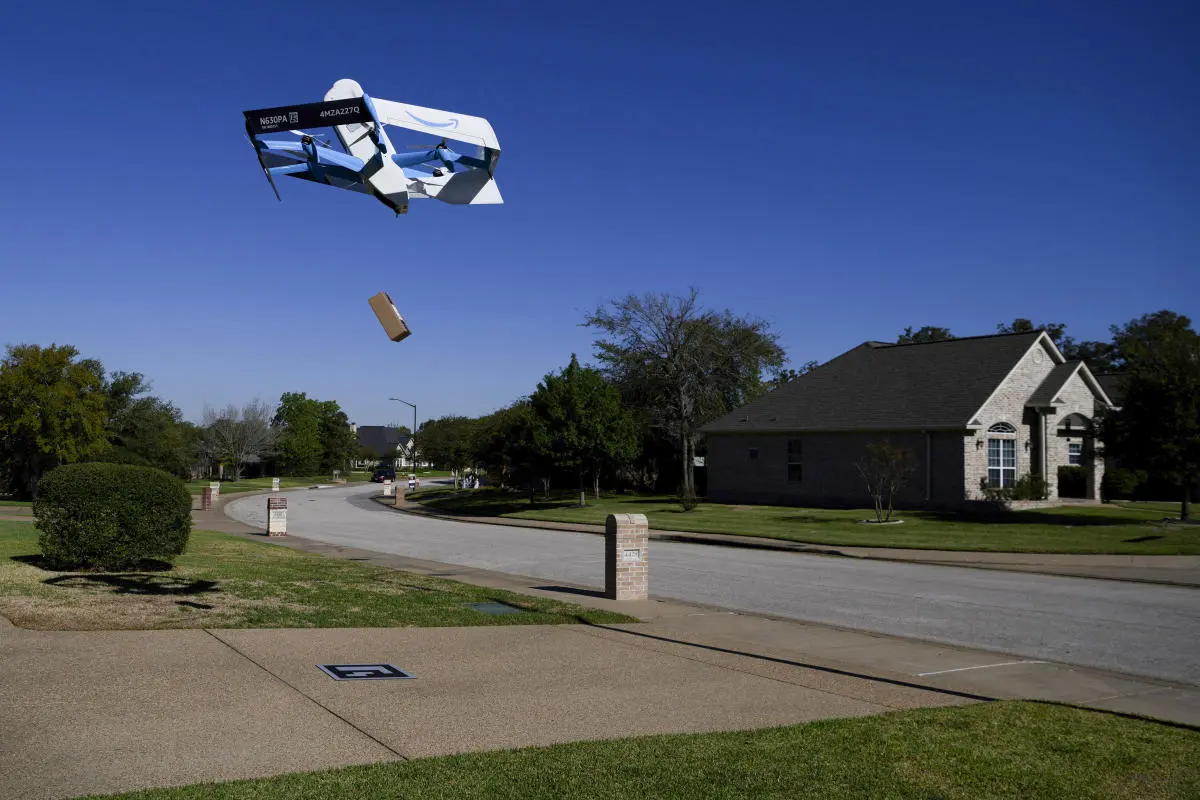Only one item can be delivered at a time. It can’t weigh more than 5 pounds. It can’t be too big. It can’t be something breakable, since the drone drops it from 12 feet. The drones can’t fly when it is too hot or too windy or too rainy.
You need to be home to put out the landing target and to make sure that a porch pirate doesn’t make off with your item or that it doesn’t roll into the street (which happened once to Lord and Silverman). But your car can’t be in the driveway. Letting the drone land in the backyard would avoid some of these problems, but not if there are trees.
Amazon has also warned customers that drone delivery is unavailable during periods of high demand for drone delivery.



The amount of energy required to keep something in the air instead of using the ground is also astronomically bigger
Not really. Many planes can get about 20 miles per gallon traveling at about 180 miles per hour. That’s slightly more than a family car, but not astronomically more.
The big differences are that there’s effectively no “traffic” in the air, so once you dial in a cruise speed you stay at that speed for the entire flight. In a car you can get stuck in stop-and-go traffic. There’s also the lack of “rolling resistance” in the air. Even if you’re going a steady speed on a highway your tires are a source of drag. On the other hand, taxing and taking off can burn gallons of fuel, so unless you’re going for a fairly long flight that’s a significant part of the fuel burn. Also, planes go in a straight line, whereas cars have to follow highways. But, the total fuel cost of the trip really includes the trip to/from the airports.
But, fundamentally, the fuel economy of cars and airplanes is pretty similar.